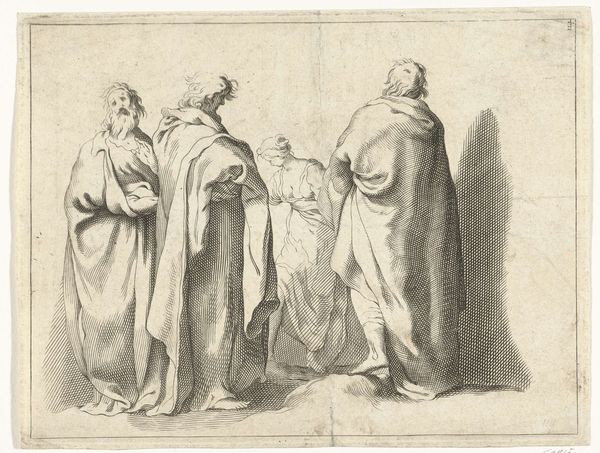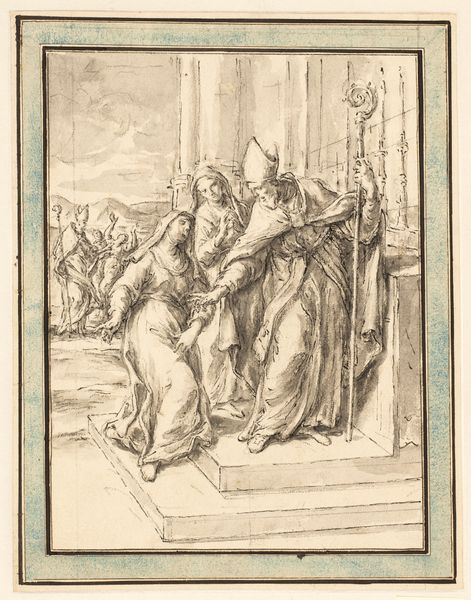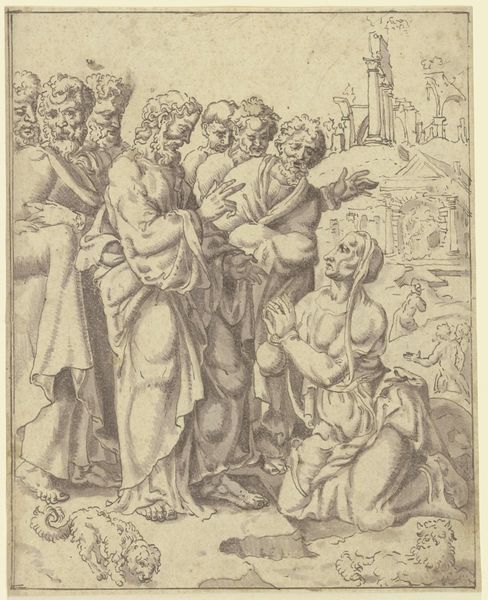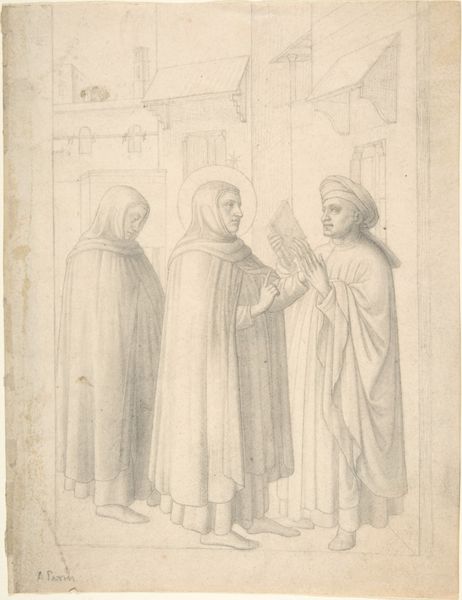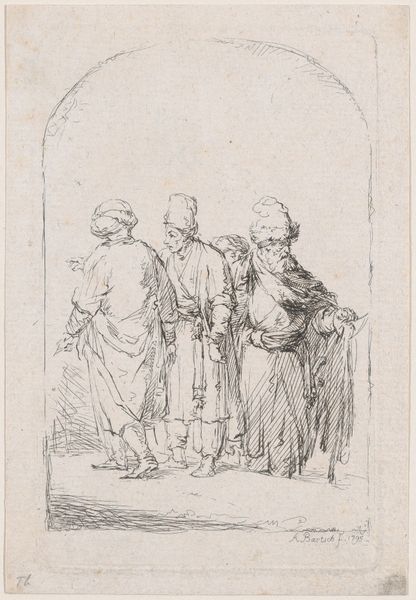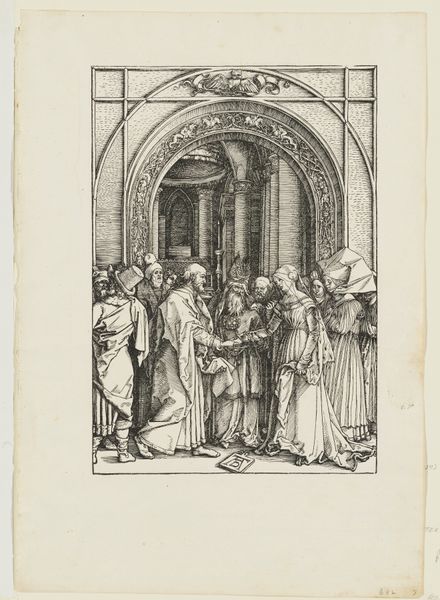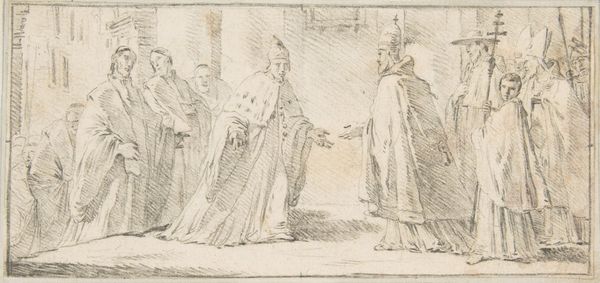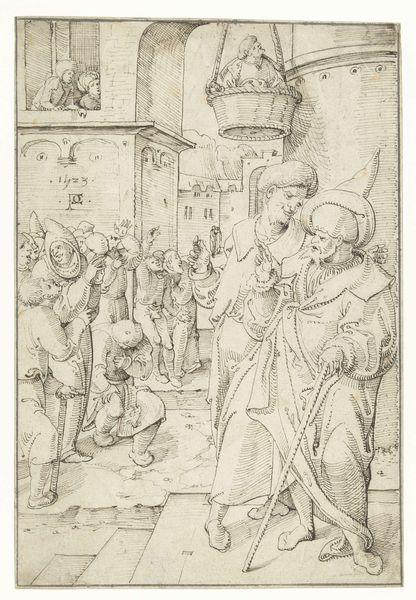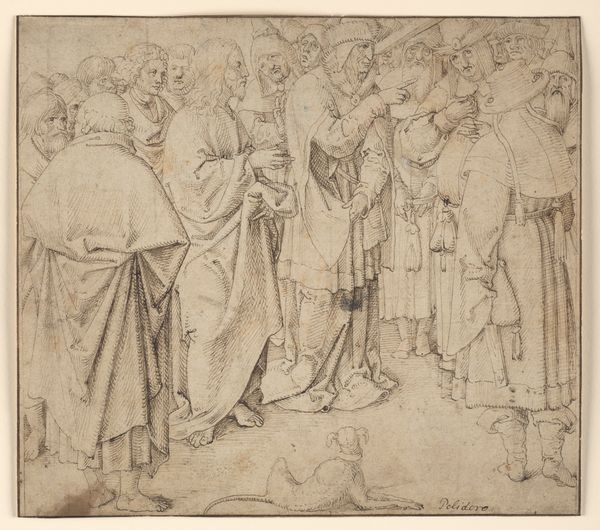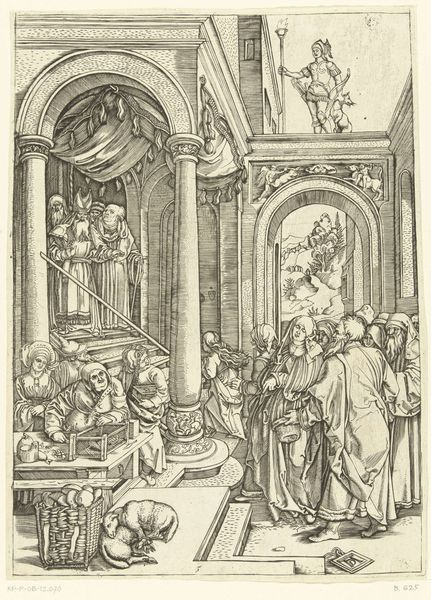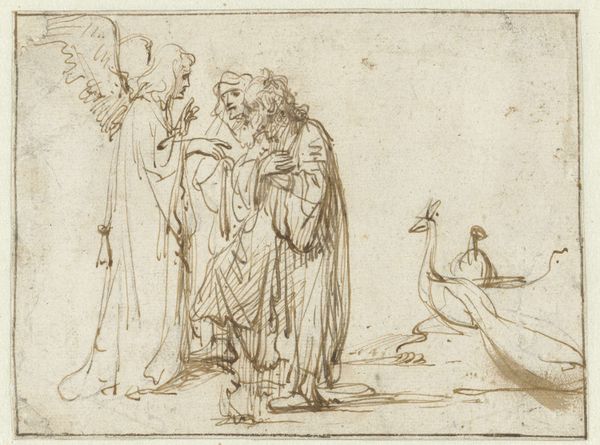
drawing, print, ink, engraving
#
drawing
#
ink drawing
# print
#
figuration
#
ink
#
line
#
history-painting
#
academic-art
#
engraving
Dimensions: plate: 27.62 × 21.59 cm (10 7/8 × 8 1/2 in.)
Copyright: National Gallery of Art: CC0 1.0
Curator: Immediately, I see a sort of quiet solemnity, almost austerity. There's a strong sense of stillness in this composition. Editor: Yes, Robert Austin created “In Santa Serva II” in 1936, using engraving as his medium. The scene depicts a gathering of figures in what appears to be a religious or historical setting, quite classically styled. What strikes me is how the architectural elements, like that massive column on the left, frame the scene and control how we perceive these figures. Curator: Precisely. The stark contrast created through the engraving process really enhances the materiality of the robes, focusing our attention on the texture and weight of the fabrics. The controlled, precise lines emphasize not just form, but the labor inherent in the piece, think of how much physical and intellectual energy went into creating each stroke of the burin. Editor: And considering the historical context, we can’t ignore the societal roles these women might have played. Are they nuns, mourners, or participants in some specific religious rite? Austin gives us an ostensibly universal scene of piety, but really it highlights how artistic institutions historically categorized the portrayal of women within narrow spheres, often devoid of individual agency. Curator: It is also interesting to consider the cultural context surrounding printmaking techniques during the early 20th century. Prints were often viewed as reproductions, copies, therefore lesser than original paintings and sculptures. Austin seems to be challenging this rigid hierarchy. Editor: The choice of engraving lends it a sort of historical gravitas, mimicking the visual language of earlier masters. Austin taps into that established visual vocabulary to add authority to his message, consciously placing it in a lineage of venerated historical images. But, is he also interrogating how art has always served power? How are we as viewers implicated? Curator: A very potent and difficult question, it encourages us to evaluate art’s relationship to larger power structures. He is asking us, using very material, physical means to question how we understand it. Editor: Yes. Considering this work has left me with even more questions, an indicator of its power and continued relevance today. Curator: I agree. It underscores the inherent complexities of artistic interpretation when viewed through material production, versus a historic narrative.
Comments
No comments
Be the first to comment and join the conversation on the ultimate creative platform.
